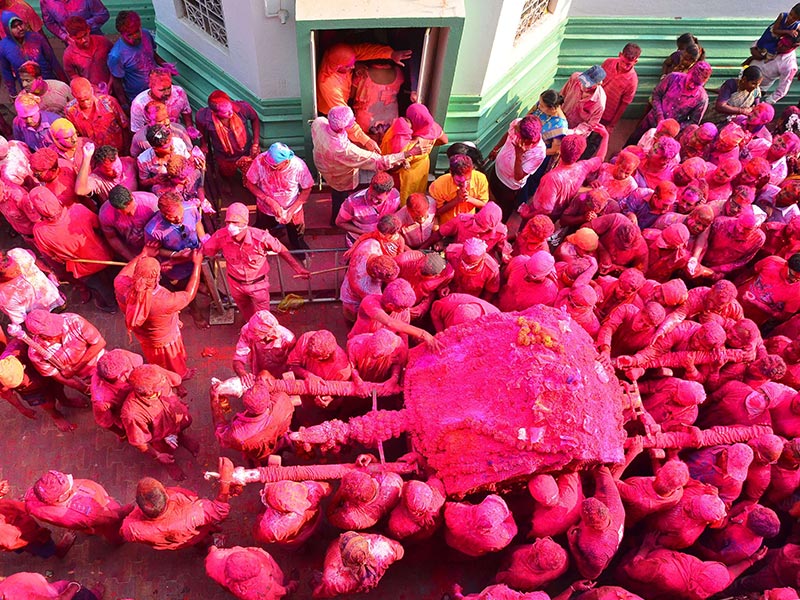
Visit the Zambaulim temple in Sanguem during the Gulal festival

The Shree Ramnath Damodar Devasthan at the Zambaulim temple is dedicated to Lord Damodar who is believed to be an incarnation of Lord Shiva. The temple had been shifted from Margao between 1565 to 1567, due to the destruction by the then Portuguese rulers during Inquisition. In its place presently, at Margao stands the Holy Spirit Church. The local rulers of Margao then, the Mahajans provided the land for the temple construction as well as the Vatan in this village of Zambaulim. A huge Pipal tree adorns the entrance to the Zambaulim temple.

The temple was built at the banks of the Kushawati river, perhaps because it was believed that the river had healing properties to cure body ailments. The Deities of Sri Ramnath, Shri Mahesha, Shri Chamundeshwari and Shri Mahakali besides the main deity of Lord Damodar (together the Panchista Parivar) are also housed within its precincts. The idol of Lakshmi Narayana is also within. There used to be a holy procession of the deity Lord Damodar around the temple premises on Monday followed by serving of the holy prasad in the afternoon, during the pre-pandemic times.
However, the best time to visit the temple would be during the local Goan Shigmo or Gulal Utsav. The palanquin of Lord Damodar is kept out. It is a huge week long celebration having significance for Hindus, specially Gawda Saraswat Brahmins. History has it that, before the Deity was transferred to Zambaulim from Margao it was kept at a residential house of the Kenis in Margao. So, the week-long Shigmo festival begins at the Keni house with puja, and the procession goes to Zambaulim where the Mahajans of the temple give the residents of Madgaokars the running of the temple for a week, before taking it back on the last day of the Shigmo festival during the Dhulvhat celebration. (Lord Damodar is the patron deity of the Madgoakars).

The Gulal Utsav celebrated during the Zambaulim Shigmo is celebrated by male devotees who smear each other with pink and red (gulal) powders to chants and drum beats and then take a dip at the river. Females do not participate in this ritual (hence the photos of the Gulal festival here are courtesy from Flickr). Nataks are performed and melas add to the festivity. One of the more important rituals performed is that of the Navro Vakalwhich is satirical performance of a marriage. During this time, recently wedded couples also seek blessings for their marital life.
The locals approach the deity often to seek his blessings, popularly also known as ‘Dambab’ before embarking on new businesses. Besides Hindus, Catholics around the village also attend the activities of the temple. The place retains its spiritual flavour, devoid of any commercial activity within its boundaries.


